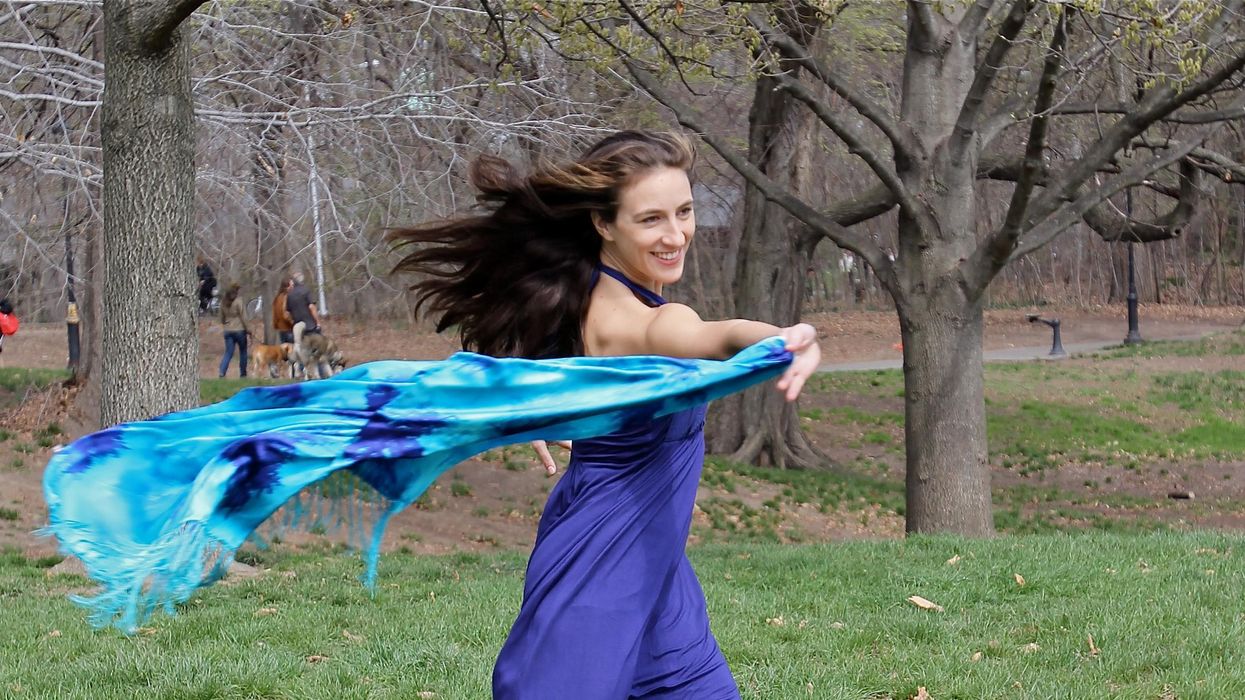How to Make Your Dancing Lighter and Breezier
Lightness is the famously elusive quality that can make a dancer seem to float on air. But as with all things dance, what looks like pure ease onstage takes an incredible amount of effort behind the scenes. “It’s the proverbial carrot that I dangle for my patients,” says Melissa Buffer, a Boston-area physical therapist who works with dancers and other performing artists. “I tell them we’re doing all these exercises and all this work, but the cumulative effect will be that aesthetic quality of lightness.”
Whether you’re striving for a fast-on-your-feet, high-jumping version or its ethereal, arm-wafting sister, we’ve gathered tips and tricks to help you achieve this mysterious but prized quality.
Explore Contrast
Keep in mind that this quality is in many ways an illusion. After all, lightness only looks light when it’s contrasted with heaviness. “If you’re just doing lightness, the audience isn’t seeing lightness,” says Elizabeth Wright, a principal dancer with the Isadora Duncan Dance Company who’s on faculty at the South Carolina Governor’s School for the Arts and Humanities. She adds that Duncan, whose name is often used as synonymous with lightness, was a master of showing that contrast. “Her dances go back and forth between heavy and light, and that makes both extremes more visible,” says Wright.
Stay Grounded
For Xiomara Reyes, the professional training division head at The Washington School of Ballet, the key to this sense of contrast is being grounded. “If you want to fly, there’s a place you need to push from,” she says. “That’s part of the groundedness, to not be stuck but have that easiness to go to what’s next.”
Wright thinks of this in terms of oppositional energy. She works with her students on falls and weighted movements to help them experience the downward pull of gravity. “Once you find the strength in the legs and in the core and in the back, and that’s all coordinated, then you can lift up and move into lightness,” she says. “If you start with lightness, it’s then very hard to find that strength.”

Mena Brunette, courtesy Washington School of Ballet
Strong Arms Are Light Arms
Imagine that your body is an orchestra. “The lower body tends to be more of the rhythm section,” says Wright, “and the upper body is more of the melody.” Somewhat counterintuitively, the way to achieve that melodious quality is actually through strength.
“Some dancers have this misunderstanding that strength training for the arms will make you look bulky,” says Buffer. “But arm positioning, holding their carriage correctly with endurance and without compensation, comes from better strength and control.” Buffer recommends regular old push-ups or other weight-bearing exercises to aid shoulder stability, strength and awareness. “This will manifest in a lighter arm and a lighter hand,” she adds.
Once you have the freedom to hold your arms up with ease, Reyes relies on softening the elbow as you exhale during preparations to create a sense of lightness. “Your port de bras should lead from the elbow,” she says, adding that this achieves a look of the whole body being synchronously in motion rather than the arms moving on their own.
Learn to Float
One of the main areas where dancers strive for a sense of lightness is jumping. Although this quality looks like it’s achieved from jumping higher, Reyes believes it’s actually more about creating the appearance of staying in the air for longer. She helps her students achieve this seemingly impossible goal by telling them to coordinate the breath with the jump: inhaling while jumping, holding for a moment in the air, and then exhaling while landing. “Have a clear picture in mind of the position that you want to hit, and then take a little breath in that position, like someone’s taking a picture
of you,” she says, adding that a soft landing utilizing plié and
not immediately dropping the arms on touchdown are also key.
Buffer sometimes has dancers hold small weights and try jumping. “It’s so simple,” she says. “Once they put the weight down and try to jump again, they’re going to feel really light.”

Courtesy Buffer
Breathe Through It
In order to steer dancers away from the “grippy” areas—clenched hands, tense jaw, held quads—that deter from a sense of lightness, Buffer works with her clients on breath control and core coordination. She sees gripping as a telltale sign of core weakness; since she believes that a good cardio-vascular system and a strong core go hand in hand, she focuses on breathing exercises that target the relationship between the pelvic floor and the diaphragm.
In one exercise, she’ll put a TheraBand around a dancer’s lower ribs, and cue them to expand their ribs on the inhale while consciously relaxing the pelvic floor. On the exhale, they’ll engage the pelvic floor and release the diaphragm. “It’s like watching paint dry, but it’s effective,” she says. “If someone has a better use of their breath and the pressure management of their body, that gives us a better sense of ease and lightness.”
Similarly, Reyes has seen some dancers try to achieve lightness by holding their breath and not using their pliés. Instead, she says, it’s the exhalation that allows for greater freedom. She gives her dancers mindfulness exercises to practice this quality. One has them visualize breathing in the energy of the earth and consciously feeling the sensation of their feet on the floor while feeling spacious. “You keep pulling the breath up, swirling it around, and use the power of your imagination to create a flow in energy, moving past the frozen spots in your body,” she says. “When dancers are using their breath onstage, you can feel yourself dancing with them. That easiness makes it feel like they’re riding a wave.”
Teachers:
For tips on helping your students find lightness, visit dance-teacher.com.





